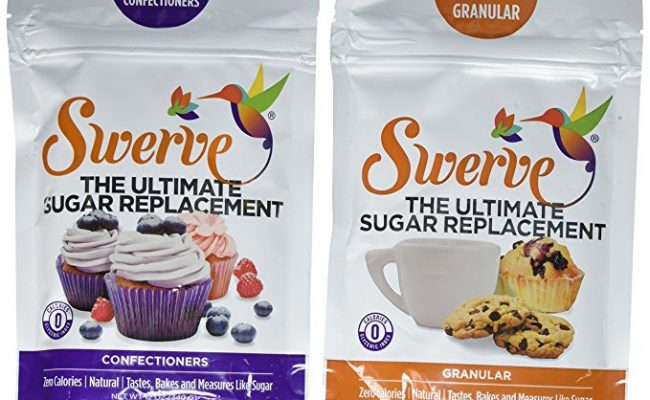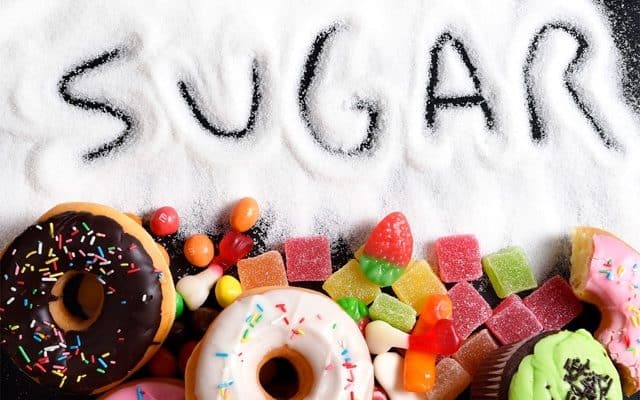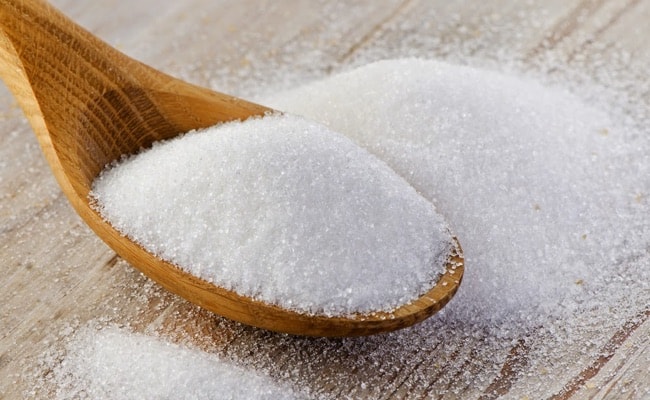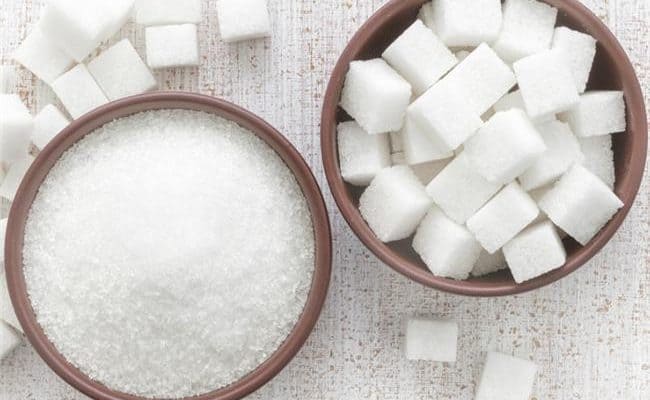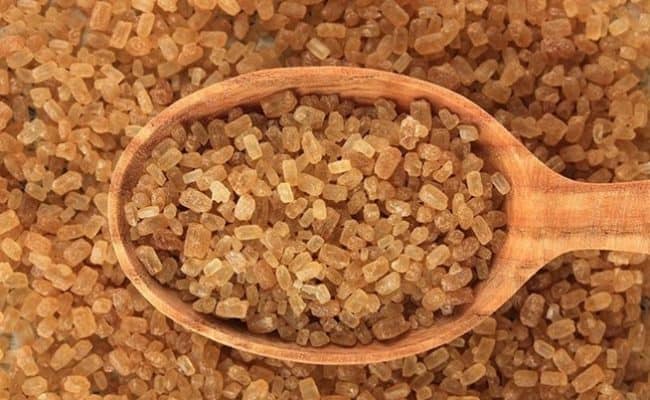
Extra sugar in the diet is a source of extra empty calories and increases risk for obesity, type 2 diabetes and possibly other chronic diseases. Approximately 13% of calories come from added sugar for most American adults according to research from the CDC. The World Health Organization recommends limiting added sugar intake to less than 10% of calories.
A common visual to grasp how much sugar is in food is a teaspoon of sugar is about 4 grams. So, if a serving of food contains more than 4 grams per serving that is more than a teaspoon of added sugar per serving of food.
Obvious sources of added sugar include candy, baked goods, and sweetened beverages. However, added sugar hides in many unsuspecting foods. Here is a list of percentage of sugar common foods.
Bread
Breads bought from a typical grocery store have a wide variance of nutritional value from processed, white bread to whole grain bread with little to no additional preservatives. Whole grain, or “brown” bread can actually have a higher amount of added sugar in it compared to white bread.
A typical slice of multi-grain bread can contain about 3 grams of sugar which represents about 11% of calories. While this is a fairly low percentage, keep in mind if you eat multiple pieces of bread per day, this added sugar can add up. Also, some breads can have closer to 5 grams of sugar per slice which would be a higher percent of calories from sugar.
Look for lower sugar content breads by checking the ingredient label to look for added sugar. Other names for added sugar can be honey, high fructose corn syrup or dextrose.
Yogurt
Yogurt, like bread, is a natural source of carbohydrates and naturally contains some sugar. However, any sweetened yogurts can be very high in calories and excess sugar, even if it is fat free. A container of sweetened yogurt can have easily 24-30 grams of sugar which would be about 60% of calories from sugar.
Choosing plain yogurt will drastically reduce percentage of calories from sugar. Adding in fruit or a small amount of nut butter, jam or honey can sweeten yogurt without the extra sugar of pre-sweetened yogurts. See also: Best alternatives to sugar
Dressing/Sauces
Any dressing or sauce from a bottle will most likely have added sugar in it for flavor. For example, a tablespoon of ketchup can have about 4 grams of sugar which equates to about 60% of calories coming from sugar.
Hoisin sauce, used in Asian cooking, contains about 4.5 grams of sugar per tablespoon which is about 50% of calories coming from sugar. Keep in mind, most people use more than a tablespoon of sauce per sitting which would double the amount of sugar intake.
Other higher sugar dressings include barbecue sauce and spaghetti sauce. A tablespoon of barbecue sauce can contain at least 6 grams of sugar per tablespoon which is about 80% of calories. Barbecue sauces vary in sugar content, so check labels before the lowest added sugar.
Canned Soup
Canned soup is notorious for being high in sodium, but sugar or high fructose corn syrup is also a common additive for soups. For example, a canned beef and vegetable soup can have 5 grams of sugar per serving which is about 17% of calories coming from added sugar.
Some canned chili can have an even higher amount of sugar and may contain more than 7 grams of sugar or 13% of calories from sugar. Eating homemade soups instead of prepared soups will eliminate the added sugar calories from canned soups.
Frozen dinners
From frozen pizza to frozen entrees, frozen prepared foods usually have added sugar in them. Frozen pizza can have about 5-6 grams of sugar per slice from the crust and pizza sauce. Frozen dinners have a wide variance in terms of added sugar, so make sure you check labels.
Frozen entrees can have up to 13-22% of calories coming from added sugar. If a frozen meal has a dessert component, of course the added sugar content would be greater.
Conclusion
Most Americans get more than the recommended intake for added sugar. Getting too much added sugar through the day increases risk for obesity, type 2 diabetes and cardiovascular disease.
Common foods for added sugar include sweets, sweetened beverages, but other foods can also contribute to total added sugar intake. The WHO recommends keeping added sugar to less than 10% of total calories.
Some packaged foods can have up to 50-60% of calories in some surprising foods.
Sauces and dressings are a common source of added sugar, but other foods such as bread, canned soup or frozen dinners can also be a relatively high source of added sugar.
Yogurts can vary in terms of percentage of calories from added sugar, so always try to choose plain yogurt over already sweetened yogurt.
References used in this article
